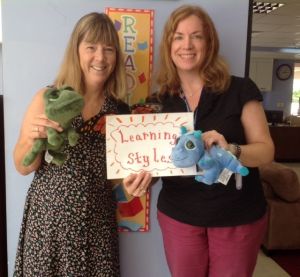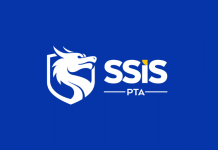 During these last few weeks of school, we have been teaching the elementary students (1st-5th grades) about different learning styles— visual, auditory and kinesthetic, and helping them identify the learning style they prefer. Having this understanding about themselves at those times when learning becomes difficult can be both a morale booster and a starting point for developing a more effective study approach.
During these last few weeks of school, we have been teaching the elementary students (1st-5th grades) about different learning styles— visual, auditory and kinesthetic, and helping them identify the learning style they prefer. Having this understanding about themselves at those times when learning becomes difficult can be both a morale booster and a starting point for developing a more effective study approach.
Understanding your child’s learning style can reduce homework frustrations and make it easier for your child to learn. Most people utilize a combination of learning styles but usually have a preference for one. There is no right or wrong learning style. Employing a variety methods to help your child understand a new concept may prevent your child from feeling frustrated when doing their homework. A wonderful website that is filled with lots of useful suggestions for parents on learning is http://www.brainboxx.co.uk/ and we would highly recommend spending some time exploring that website.
Below are some learning style homework tips from an excellent website called www.schoolfamily.com
Learning Styles Homework Tips:
1. Auditory Learners are typically good at absorbing information from spoken words.
Strategies that work well for auditory learners include:
- Talking to themselves or others about what they’re learning
- Reciting important information aloud, perhaps recording it and playing it back
- Reading a book and listening to the audio book at the same time
- Using word associations
- Setting information to a tune and singing it to help remember it
- Limiting distracting noises
2. Kinesthetic learners prefer to be active while studying and may not be able to focus while sitting still.
Strategies for kinesthetic learners include:
- Reading aloud and tracking words on a page with a finger
- Writing things down multiple times to commit them to memory
- Highlighting and underlining
- Playing with a stress ball or toy while studying
- Moving around or taking frequent breaks
- Doing hands-on activities, such as building models or playing games
3. Visual Learners benefit from seeing information on a chalkboard or in a graph/chart/illustration, and may grow impatient listening for long periods of time.
Strategies for visual learners include:
- Using flash cards
- Studying charts, tables and maps
- Drawing illustrations
- Writing things down and reviewing notes
- Highlighting and underlining
- Color-coding information
In reading these strategies, we would imagine that you have incidentally identified your own preferred learning style! Don’t assume that yours matches with that of your child…if you do, working together may become a battle of wills instead of a productive learning experience!


![[AS] Welcome New Faculty, 2023-2024 (May 2023) Head of School Letter header](https://enews.ssis.edu.vn/wp-content/uploads/2022/08/HOS-Letter-SY22-23-218x150.png)

![[AS] Award-Winning Author Minh Lê Visits SSIS!](https://enews.ssis.edu.vn/wp-content/uploads/2023/04/Minh-Le-218x150.jpg)
![[AS] Annual Community Survey](https://enews.ssis.edu.vn/wp-content/uploads/2022/03/2022-Community-Survey-218x150.jpg)
![[ES] Classroom Placement, 2023-2024 – Opportunity for Parent Input elementary school general graphic](https://enews.ssis.edu.vn/wp-content/uploads/2022/07/ES-eNews-Cover-218x150.png)

![[G6-8] Important End-of-Year Events and Dates](https://enews.ssis.edu.vn/wp-content/uploads/2022/07/MS-eNews-Cover-218x150.png)


![[G9-11] Invitation to University Application Policies and Procedures, Wednesday, 8:00 am](https://enews.ssis.edu.vn/wp-content/uploads/2020/10/University-Application-Process-218x150.jpg)
![[G12] US Student Visa: US Consulate to Provide Information, Monday, May 8, 6:00 – 7:30 pm HS eNews Cover](https://enews.ssis.edu.vn/wp-content/uploads/2022/07/HS-eNews-Cover-218x150.png)



